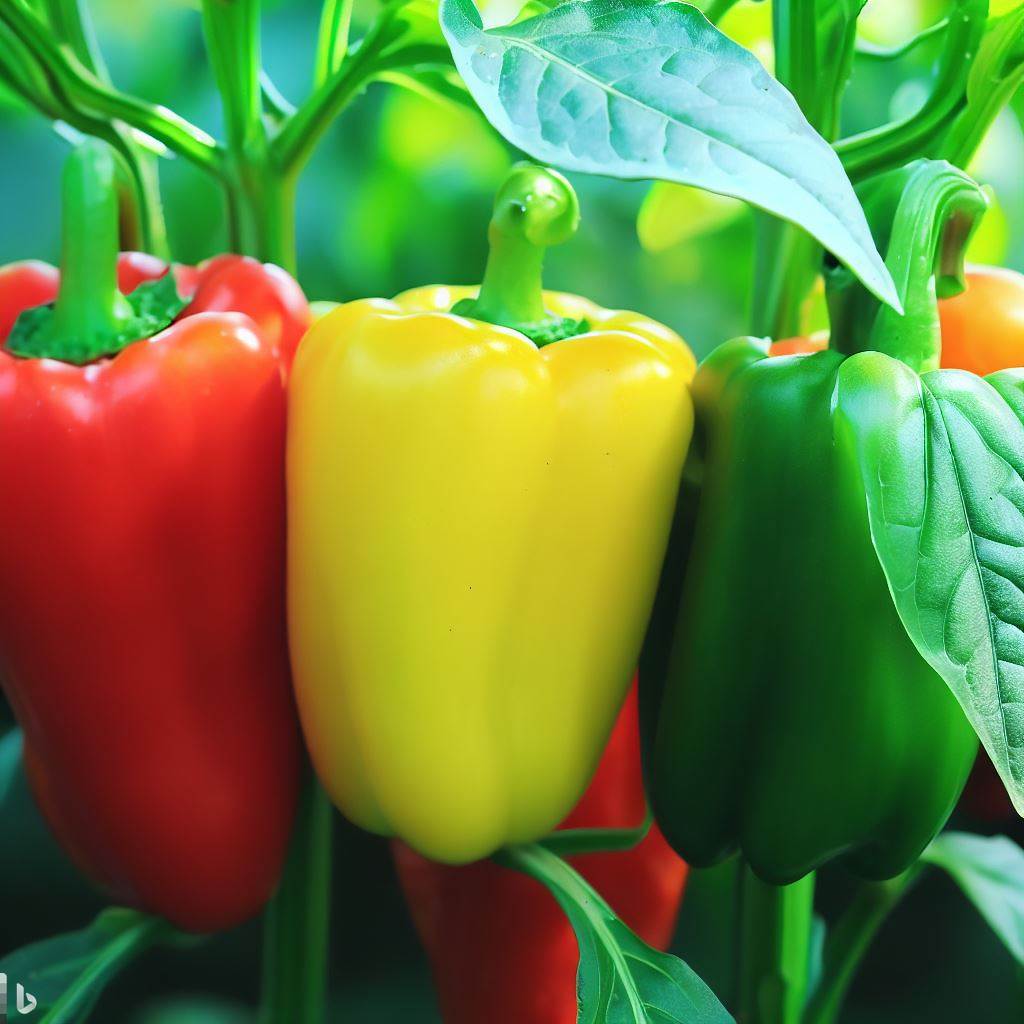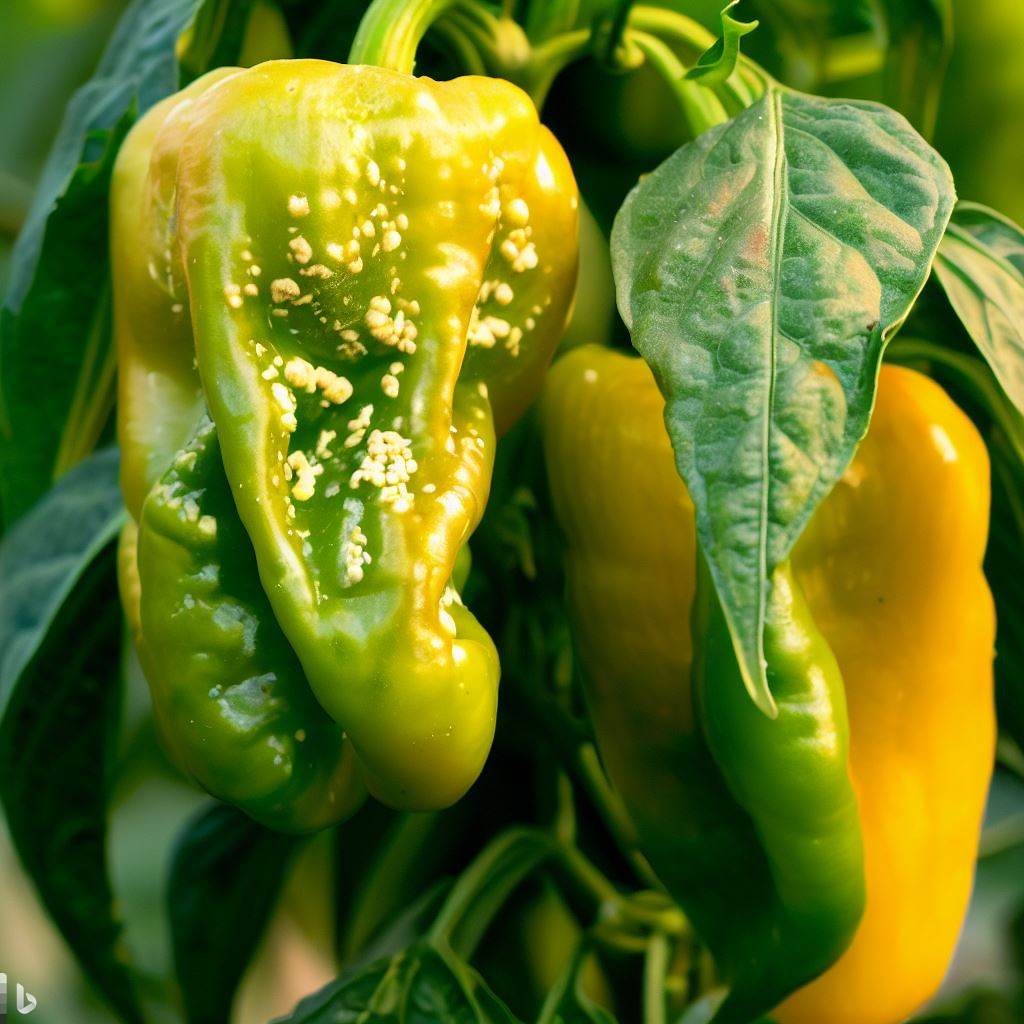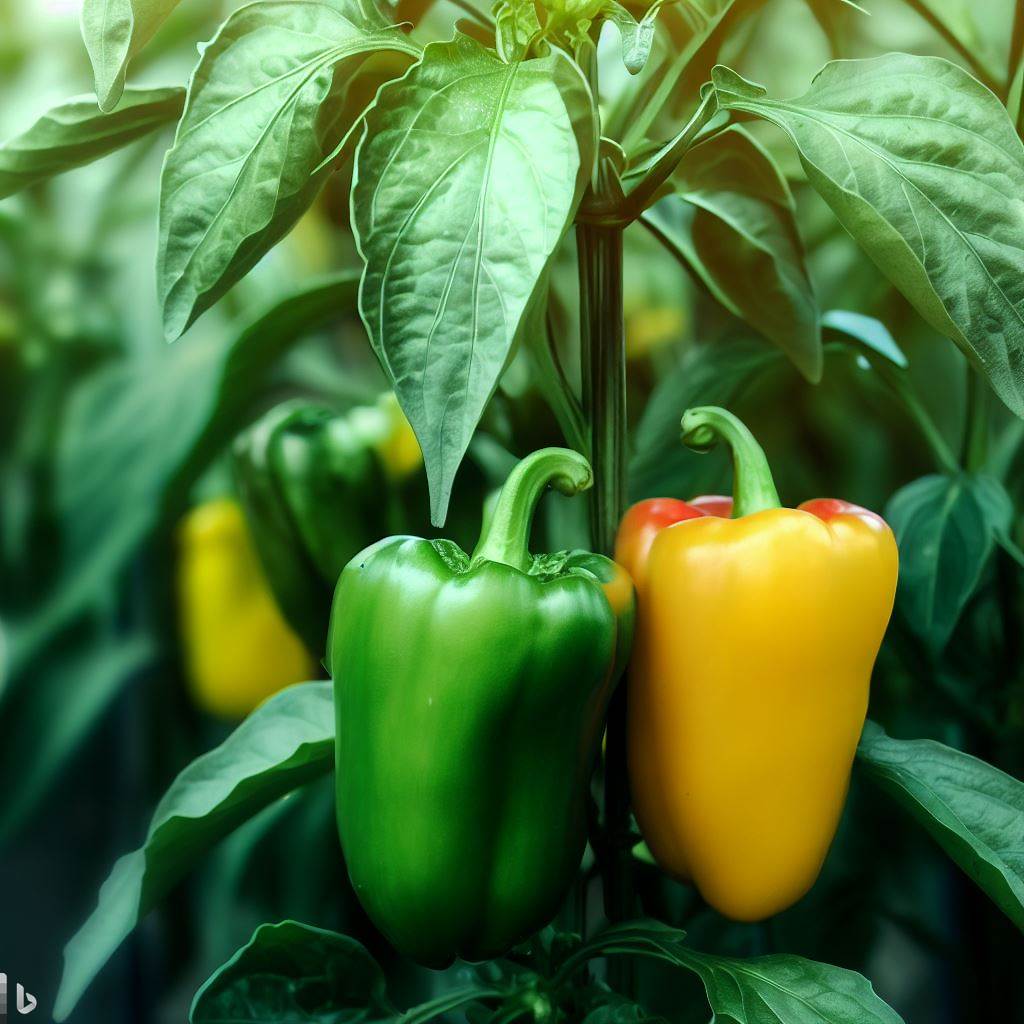Remember when you once stood in your kitchen and vocally sulked, “My bell peppers are small!” Well, fret not! After this guide, you’ll possess the knowledge to turn the little guys into formidable ingredients with flavors that send your taste buds on a thrilling roller coaster ride.
Our tiny-but-mighty home garden article gems are making strides in the world of culinary delights. Oh yes, girth isn’t everything when it comes to these fiery morsels.
Join us as we embark on our journey to celebrate these compact champions. Let’s debunk myths about size together; after all, great things always start small!
Here is an exciting article you might be interested in my pepper plants are not growing
Another article for you netting tomatoes

My Bell Peppers are Small: Potential Reasons Why
When it comes to growing bell peppers, sometimes you may encounter the frustrating issue of small-sized fruits. Several factors can contribute to this problem, such as inadequate growing conditions or nutrient deficiencies.
By understanding these potential reasons, you can take steps to enhance your garden yield and ensure larger, more flavorful bell peppers.
One common reason for small bell peppers is improper environmental conditions. Pepper plants thrive in warm temperatures between 70-90°F (21-32°C). Cooler weather can stunt their growth and result in smaller fruits.
Additionally, insufficient sunlight or improper sun exposure may limit photosynthesis, hindering pepper size development. With that said, let’s look at the 7 ways to make your pepper sizs bigger.
1. The Impact of Environmental Conditions on Pepper Size
The right environmental conditions play a crucial role in determining the size of your bell peppers. To maximize growth potential, provide your plants with at least six hours of direct sunlight every day.
If natural light is limited or unreliable in your area the “my bell peppers are small” chant will inevitably be heard in your yard or home. To avoid that, consider using grow lights to supplement their needs.
Another important aspect is maintaining consistent soil moisture levels throughout the growing season. Inadequate watering can cause stress on the plant and lead to smaller fruit production.
It’s essential to water deeply but avoid overwatering that could drown the roots.
2. The Role of Proper Watering in Achieving Larger Peppers
To ensure sufficient hydration for your pepper plants:
- Water consistently and evenly: Aim for approximately one inch (2.5 cm) of water per week.
- Deep watering: Irrigate deeply once or twice a week rather than light daily sprinkling.
- Monitor soil moisture: Avoid letting the soil completely dry out between waterings.
By adhering to proper watering techniques, you will maintain healthy root systems that support optimal nutrient absorption and ultimately achieve larger bell peppers.
3. Nutrient Requirements for Healthy, Large Bell Pepper Growth
Providing your pepper plants with the right nutrients is vital for their growth and development. Here are some essential tips to ensure healthy, large-sized bell peppers:
a. Soil Fertility
Test your soil’s pH level and nutrient content to identify any deficiencies or imbalances. Amend the soil accordingly by adding organic matter or fertilizers specific to pepper plants.
b. Balanced Fertilization
Use a well-balanced slow-release fertilizer that provides adequate levels of nitrogen, phosphorus, and potassium (NPK). These macronutrients are crucial for overall plant health and fruit production.
c. Micronutrients
Ensure micronutrient availability by using a balanced fertilizer containing trace elements like iron, magnesium, and calcium.
Remember to follow manufacturer instructions when applying fertilizers and adjust nutrient application based on the specific needs of your pepper plants.

4. Pruning Techniques to Aid in Pepper Size Increase
Proper pruning can significantly impact the size and quality of your bell peppers. Pruning encourages better airflow around the plants while removing unnecessary foliage that may divert energy from fruit production.
Follow these tips when pruning your pepper plants:
1. Remove suckers: Suckers are small shoots that grow between the main stem and branches. Removing them helps redirect energy towards fruit development.
2. Limit branching: Depending on the variety, limit each plant to two or three main branches by selectively removing additional ones.
3. Trim excessive foliage: Eliminate excessive leaves that shadow developing fruits but retain enough foliage for photosynthesis.
By adopting appropriate pruning techniques tailored to your specific growing conditions, you can enhance resource allocation within the plant leading to larger bell peppers.
5. Significance of Correct Plant Spacing and Sun Exposure
Plant spacing plays a significant role in determining both plant health and yield potential. Overcrowded plants compete for resources and sunlight, resulting in smaller peppers. Follow these guidelines for optimal plant spacing:
In-ground planting:
Space bell pepper plants are approximately 18-24 inches (46-61 cm) apart to allow sufficient air circulation and access to sunlight.
Container gardening:
If growing in containers, provide each plant with a pot that is at least 5 gallons (19 liters) in size.
In addition to proper spacing, ensuring adequate sun exposure is vital for larger peppers. Position your plants where they receive ample direct sunlight throughout the day.
6. Effects of Pests and Disease on Bell Pepper Development
Pests and diseases can pose significant threats to bell pepper development. Common pests like aphids, spider mites, or thrips can cause damage that affects fruit size.
Similarly, diseases such as bacterial spot or blossom end rot can result in stunted growth. To prevent these issues:
1. Monitor your plants regularly for signs of pest infestation or disease symptoms.
2. Practice crop rotation annually to reduce the risk of soilborne pathogens.
3. Consider using organic insecticides or fungicides if necessary, following label instructions carefully.
By maintaining a vigilant approach towards pest control and disease prevention measures, you’ll give your bell peppers the best chance at healthy growth and larger fruit production.
7. Selection of Appropriate Varieties for Desired Pepper Size
When choosing which bell pepper varieties to grow, consider their typical mature size as noted on seed packets or nursery labels.
Some varieties naturally tend toward smaller fruits while others are known for large-sized peppers.
By selecting appropriate varieties based on your desired outcome – whether it’s smaller snack-sized fruits or large bells perfect for stuffing – you’ll set yourself up for success and never have to dread the reality that “my bell peppers are small.”

Conclusion
By implementing these tips and strategies, you can overcome the challenges of small bell peppers and enhance their size, taste, and overall quality.
With a combination of proper environmental conditions, watering practices, nutrient support, pruning techniques, among others as included in this guide, you’ll be well on your way to growing bountiful harvests of deliciously large bell peppers in your vegetable garden!
If you found this article exciting, this another great read night time camp games
We also found this great pick for you non refrigerated breakfast ideas
FAQs
Q: Why are my bell peppers so small?
A: There can be several reasons why your bell peppers are smaller than expected. One common reason is lack of water. Bell peppers need consistent moisture to grow to their full potential, so make sure you are watering them regularly and adequately.
Q: How often do bell peppers need to be watered?
A: Bell peppers need to be watered frequently, especially during hot weather. They prefer moist soil, so aim to keep the soil consistently damp but not waterlogged.
Q: What are the common reasons for small bell peppers?
A: Besides inadequate watering, there are other factors that can affect the size of your bell peppers. One of them is the lack of flowers. Bell peppers need flowers to produce fruit, so if your plant is not flowering, you won’t see any peppers. Another factor can be the choice of bell pepper varieties. Some varieties naturally produce smaller fruits compared to others.
Q: How can soil conditions affect bell pepper size?
A: Soil conditions play a crucial role in the growth and development of bell peppers. They prefer well-draining, nutrient-rich soil. If the soil is too compacted or lacking in essential nutrients, it can hinder the plant’s ability to produce larger peppers. Ensure you provide your bell pepper plants with fertile soil that has good drainage.
Q: How many hours of sunlight do bell peppers need?
A: Like all plants, bell peppers need sufficient sunlight to photosynthesize and thrive. They require at least 6-8 hours of direct sunlight daily to produce larger fruits. If you are growing bell peppers indoors, make sure they receive enough light by placing them near a sunny window or using artificial grow lights.
Q: Can planting bell peppers too close together affect their size?
A: Yes, planting bell peppers too close together can impact their size. When the plants are overcrowded, they compete for nutrients, water, and sunlight, resulting in smaller fruits. To give your bell pepper plants room to grow, space them at least 18-24 inches apart.
Q: How can I give my bell peppers the nutrients they need to grow larger?
A: Providing your bell pepper plants with sufficient nutrients is crucial for their growth. You can achieve this by incorporating compost or well-rotted manure into the soil before planting. Additionally, using a balanced fertilizer specifically formulated for vegetables can help ensure your peppers receive the necessary nutrients to produce larger fruits.
Q: Can the temperature affect how big bell peppers grow?
A: Yes, temperature can make a big difference in the size of bell peppers. They thrive in temperatures between 70 and 85 degrees Fahrenheit. Extremely hot or cold temperatures can stress the plants, negatively impacting their growth and resulting in smaller fruits. Ensure you provide a favorable temperature range for your bell pepper plants.
Q: Why aren’t my bell peppers growing as big as they should be?
A: If your bell peppers aren’t growing as big as they should be, there could be several reasons. Lack of water, inadequate soil conditions, insufficient sunlight, or overcrowding are some common factors that can hinder their growth. Evaluate these conditions and make necessary adjustments to help your bell peppers reach their full potential.
Q: How long does it take for bell peppers to grow to their full size?
A: Bell peppers have a relatively long growing season. From transplanting to harvest, it typically takes around 60-90 days for bell peppers to reach their full size, depending on the variety and growing conditions. Patience is key when it comes to growing bigger bell peppers!